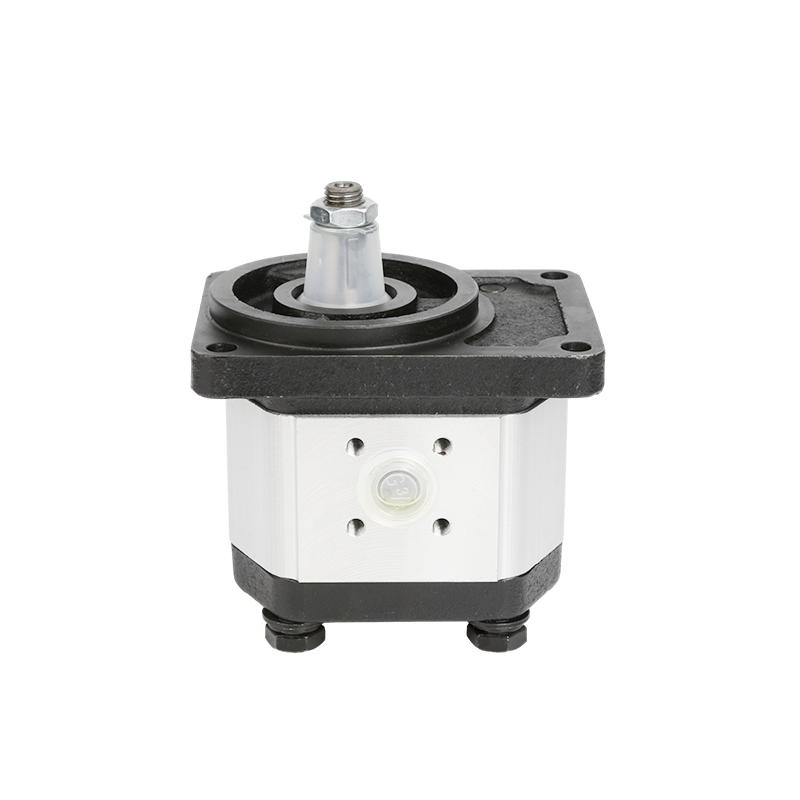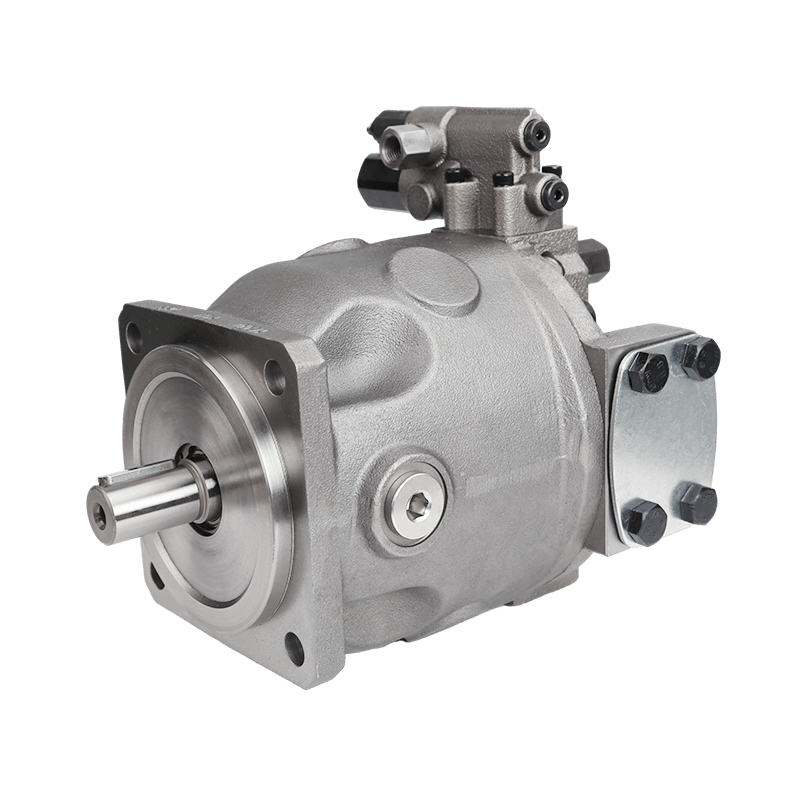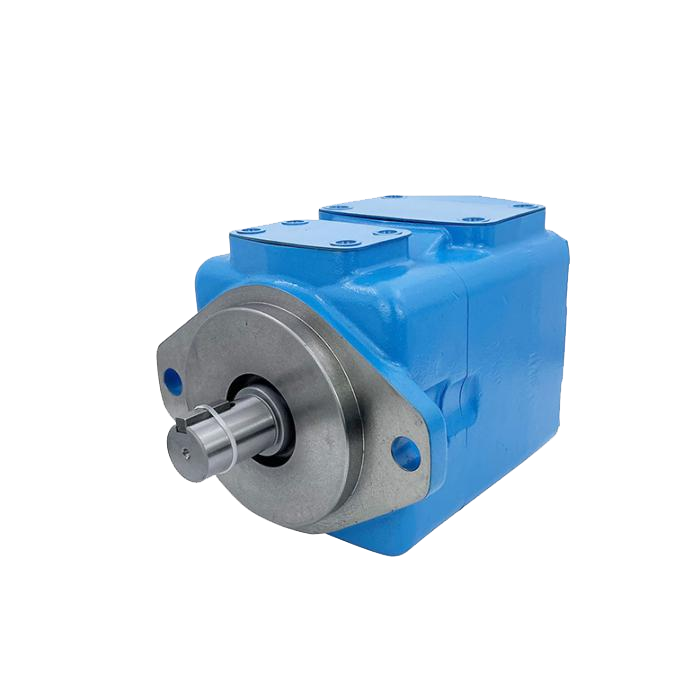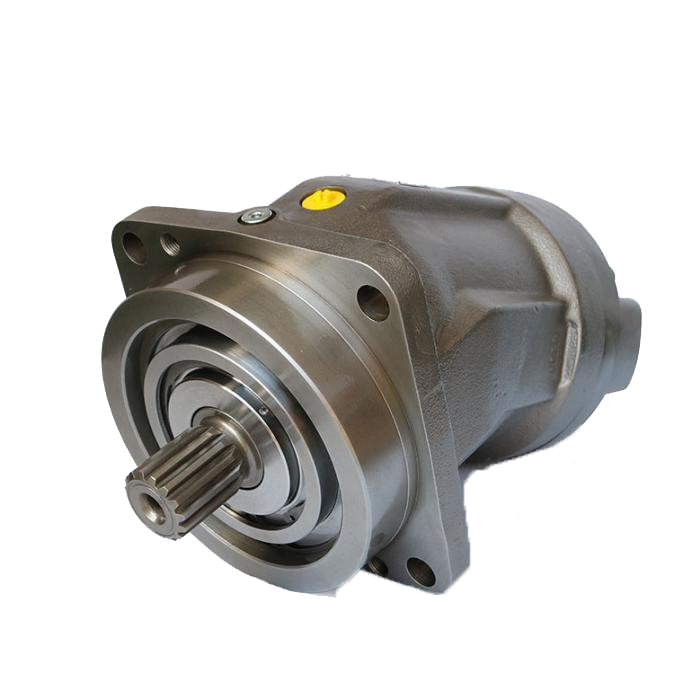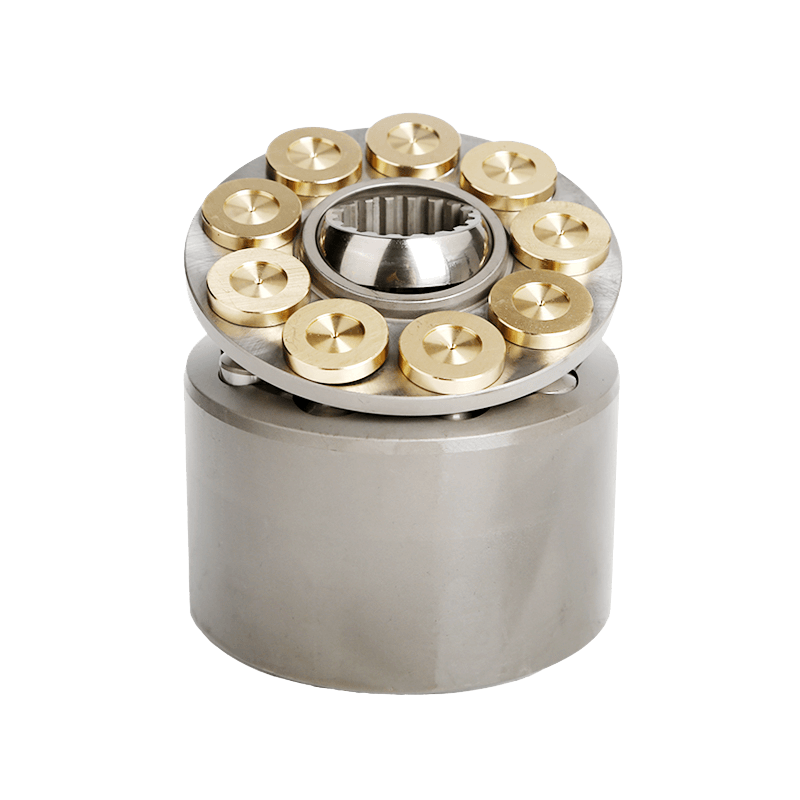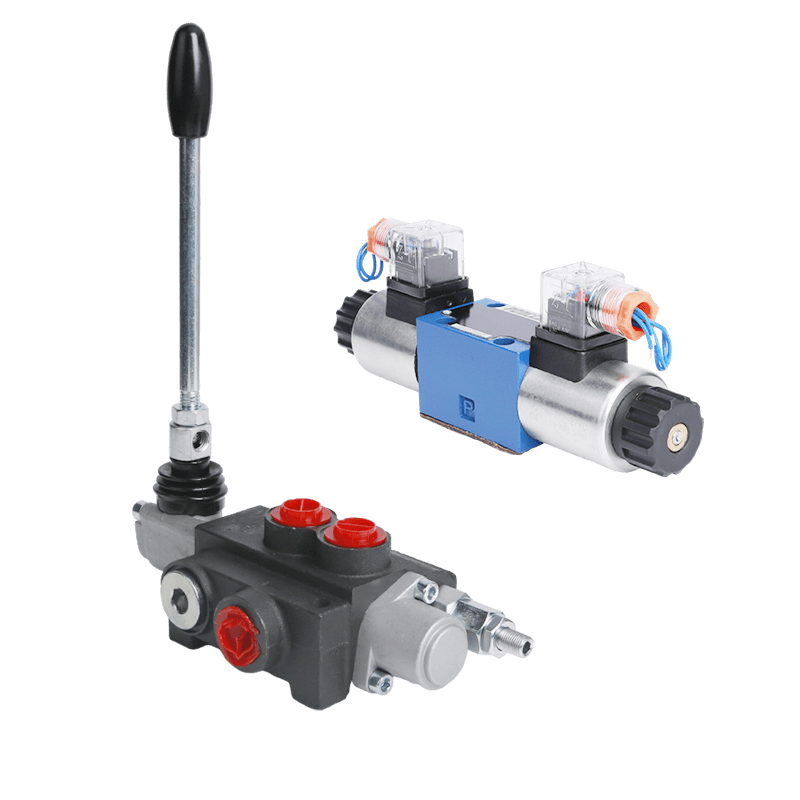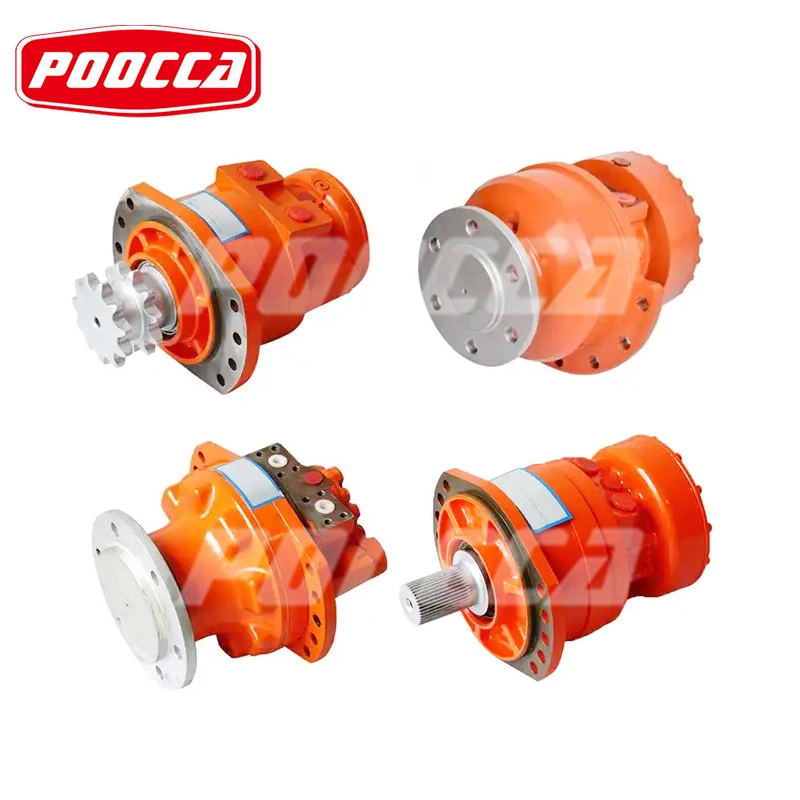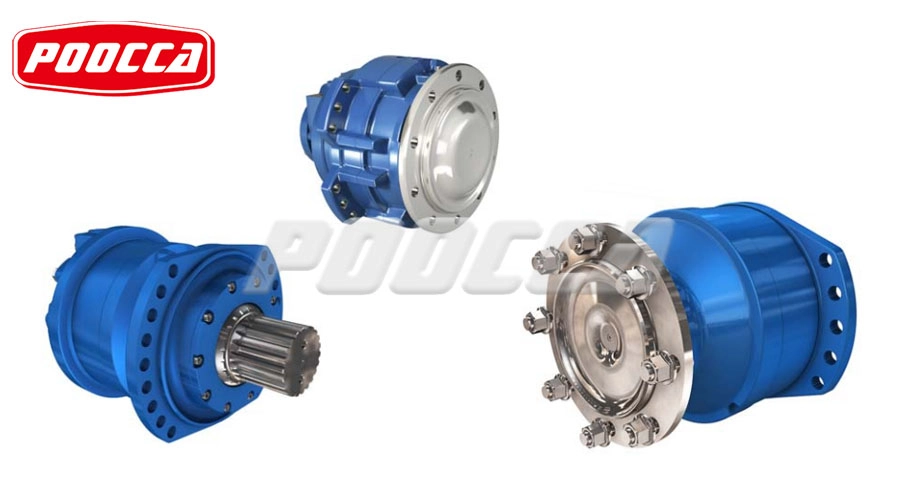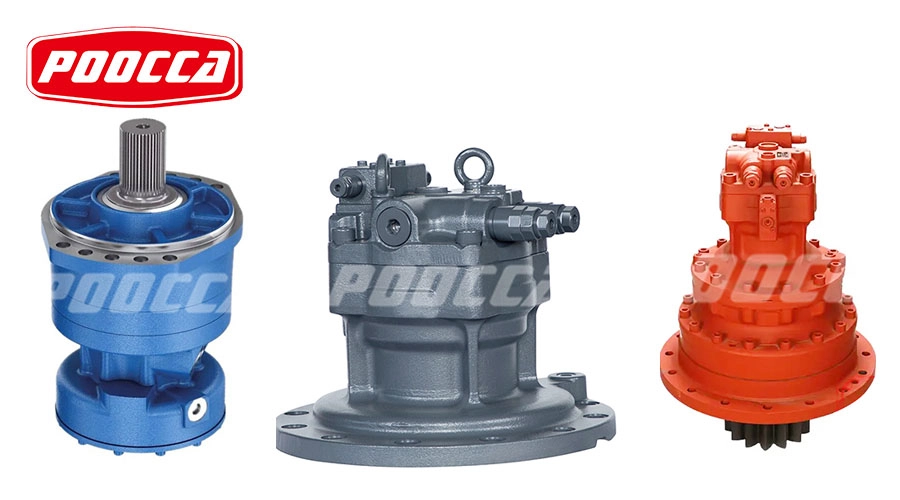Understanding Hydraulic Radial Piston Motors
What Is a Hydraulic Radial Piston Motor?
A hydraulic radial piston motor is a robust mechanical tool. It transforms hydraulic energy into spinning motion. This device is commonly employed in tough tasks. It shines where strong torque and precise movement are vital. Sectors like building, farming, and mining depend on these motors. They drive equipment such as diggers, hoists, and boring machines.
Unlike standard electric motors, a hydraulic radial piston motor runs on pressurized liquid. This makes it very effective in places where electricity isn’t practical. Its capacity to work under intense pressure settings positions it as a top pick for challenging jobs.
Radial vs. Axial Piston Motors: Key Differences
Radial and axial piston motors both serve hydraulic systems. However, their inner structures and output traits vary greatly. Radial piston motors feature pistons set in a round layout around the output shaft. This setup lets them produce strong torque at slow speeds. Thus, they suit heavy equipment needing careful motion and strength.
Axial piston motors, by contrast, place pistons alongside the shaft. They deliver faster spinning rates. Yet, they often fall short in torque production compared to radial types. This explains why hydraulic radial piston motors are preferred for tasks prioritizing torque over speed, like lifting or boring work.
Core Components of a Radial Piston Hydraulic Motor
A radial piston hydraulic motor includes several essential parts. These work in unison to guarantee seamless function. The pistons circle a central shaft. They shift in reaction to hydraulic force. A cam ring directs the pistons, turning their motion into spinning power.
The cylinder block holds the pistons steady during action. A top-notch valving setup manages the hydraulic fluid’s flow. It channels the liquid to the pistons at exact moments to create steady energy. The materials chosen and crafting accuracy play a big role. They ensure the motor’s toughness, letting it endure high-pressure zones without losing output.
How Does a Radial Piston Hydraulic Motor Work?
The Basic Working Principle
A hydraulic radial piston motor operates by using pressurized liquid to push pistons against a cam ring. This action generates spinning motion. When hydraulic fluid enters the motor, it drives the pistons outward against the cam ring. That creates torque. Then, the pistons pull back as the fluid shifts direction, enabling ongoing motion.
This cycle ensures a fluid and managed spinning output. It makes these motors very effective for heavy tasks. Their knack for delivering strong torque at low speeds stands out as a key strength over other hydraulic motor types.
Step-by-Step Power Conversion Process
The working of a radial piston hydraulic motor breaks into three core steps. First, hydraulic fluid flows into the motor. It builds pressure that pushes the pistons outward. Next, the pistons press against the cam ring. This produces torque that turns the output shaft. Finally, the fluid redirects, and the pistons retract. This lets the cycle restart.
This steady loop allows the motor to provide a reliable and potent spinning force. How well this works hinges on factors like fluid purity, piston motion accuracy, and the valving system’s soundness.
Efficiency Factors in Radial Piston Motors
Several elements shape a radial piston hydraulic motor’s productivity. Managing inner leaks is crucial for steady energy output. Advanced seals cut down fluid loss. This boosts energy transformation.
Reducing friction matters too. Top-grade bearings and finely made parts lower inner resistance. This helps the motor run smoothly. Good heat control is also key. Too much heat can harm output and cut the motor’s life short. Compared to gear and vane motors, radial piston designs excel in productivity. They handle high pressure with little energy waste.
Advantages of Radial Piston Hydraulic Motors
High Torque Output in Compact Designs
One prime perk of radial piston hydraulic motors is their ability to offer strong torque in a fairly small build. This makes them perfect for equipment in tight spaces. Yet, they still deliver potent performance.
Durability Under Extreme Conditions
These motors are crafted to endure harsh settings. They tackle high-pressure zones, sudden loads, and dirt exposure. Their sturdy make ensures lasting trustworthiness, even in tough industrial uses.
Flexibility in Speed and Direction Control
Radial piston hydraulic motors allow great command over speed and direction. They can reverse easily and adjust for varying speed needs. This suits them for tools like conveyors and hoisting setups.
Choosing Reliable Radial Piston Hydraulic Motor Manufacturers
Key Criteria for Selecting a Manufacturer
When picking radial piston hydraulic motor manufacturers, certain factors stand out. Look at certifications, innovation skills, and post-sale help. Makers with ISO and CE credentials meet strict field standards. This ensures product quality and dependability.
Global vs. Regional Suppliers: Pros and Cons
Global suppliers often boast a broader product lineup with cutting-edge tech. However, their delivery might take longer. Regional makers may provide quicker shipping and better tailoring options. But their range could be narrower.
Innovations in Radial Piston Motor Technology
Recent strides in radial piston hydraulic motors include smart sensors. These track performance live. Eco-friendly hydraulic fluids are also in use. Hybrid setups blending hydraulic and electric power are popping up too. They offer better productivity and greener operation.
Maintenance Tips for Long-Term Performance
Common Failure Modes and Prevention
For lasting output, preventing typical breakdowns is key. Watch for piston wear, fluid dirtiness, and overheating. Regular upkeep spots and fixes potential troubles before they cause motor failure.
Best Practices for Routine Inspections
Routine checks should cover hydraulic fluid quality. Ensure proper greasing and verify part alignment. These steps keep peak performance and stretch the motor’s life.
When to Repair vs. Replace Your Motor
Deciding to fix or swap a hydraulic radial piston motor depends on repair costs, motor age, and part availability. If fixing costs top 50% of a new motor’s price, replacing it often makes more sense.
Real-World Applications of Radial Piston Motors
Case Study: Mining Equipment
In mining, radial piston hydraulic motors power hefty boring tools and diggers. Their knack for working in tough conditions makes them a great fit for this field.
Agricultural Machinery Applications
Farm tools like reapers and watering systems lean on hydraulic radial piston motors for smooth running. Their strong torque ability lets them tackle hard jobs easily.
Emerging Uses in Renewable Energy Systems
Radial piston motors are also eyed for renewable energy roles. Think hydraulic energy storage and wind turbine angle control. These new uses show this tech’s flexibility.
FAQs About Hydraulic Radial Piston Motors
How does a hydraulic radial piston pump work?
A radial piston pump works oppositely to a motor. It turns mechanical energy into hydraulic pressure.
What makes radial piston motors more efficient than gear motors?
Radial piston motors have less inner leakage and better pressure handling. This boosts their productivity in high-torque tasks.
Can radial piston motors be customized for unique applications?
Yes, many radial piston hydraulic motor manufacturers offer tailoring based on specific field needs.
Final Thoughts and Next Steps
Hydraulic radial piston motors are vital in today’s industrial uses. They offer strong torque, toughness, and exact control. Whether in mining, farming, or green energy, their productivity and trustworthiness make them a smart choice.
POOCCA is a leading brand in the hydraulic industry. Our expertise lies in the design, manufacture, maintenance and sale of hydraulic pumps, motors, valves, accessories and custom solutions.
You are welcome to send your requirements. We will provide you with affordable quotations, detailed product parameters, dimensions, physical pictures and other specific information.
Ready to boost your equipment? Contact top radial piston hydraulic motor manufacturers to find the best fit for your needs today!

